The meridian system consists of two main parts: the primary meridians and the collateral meridians. The primary meridians can be divided into the regular meridians and the extraordinary meridians, which are the main components of the meridian system. They connect internally to the organs and externally to the skin and muscles. Among them, the twelve primary meridians serve as channels for the flow of Qi and blood, while the eight extraordinary vessels connect and regulate the twelve primary meridians. The eight extraordinary vessels specifically include Ren Mai (Ren Vessel), Du Mai (Du Vessel), Chong Mai (Chong Vessel), Dai Mai (Dai Vessel), Yin Qiao Mai (Yin Heel Vessel), Yang Qiao Mai (Yang Heel Vessel), Yin Wei Mai (Yin Linking Vessel) and Yang Wei Mai (Yang Linking Vessel), with their main functions being: first, to closely link the twelve primary meridians; second, to regulate the Qi and blood of the twelve primary meridians; and third, to have a close relationship with certain organs.
The Pathways of the Eight Extraordinary Vessels
1.Ren Mai

1. Pathway
Ren Mai originates from the center of the uterus, descends through the perineum, passes through the Yin mound, ascends along the midline of the abdomen, traverses the throat (Tian Tu point), reaches the inner lower lip, divides to the left and right, encircles the lips, intersects with the Du Mai at the Yin Jiao point, and then passes through the sides of the nose, ascending to the lower eye socket (Cheng Qi point), connecting with the Foot Yangming meridian.
2. Branches
It penetrates from the center of the uterus along the spine, ascending along the back.
3. Physiological Functions
(1) Regulates the Qi and blood of the Yin meridians, known as the “Sea of Yin Vessels”
Ren Mai runs along the midline of the abdomen, which is Yin, indicating that Ren Mai has a comprehensive and governing role over the Qi of the Yin meridians. Additionally, the three Yin meridians of the foot intersect with Ren Mai in the lower abdomen, and the three Yin meridians of the hand connect with Ren Mai through the three Yin meridians of the foot, thus Ren Mai regulates the Qi and blood of the Yin meridians, hence the saying “governs all Yin”.
(2) Regulates menstruation and nourishes the fetus
Ren Mai originates from the center of the uterus, playing a role in regulating menstruation and promoting female reproductive functions, hence the saying “Ren governs the uterus and fetus”.
2.Du Mai
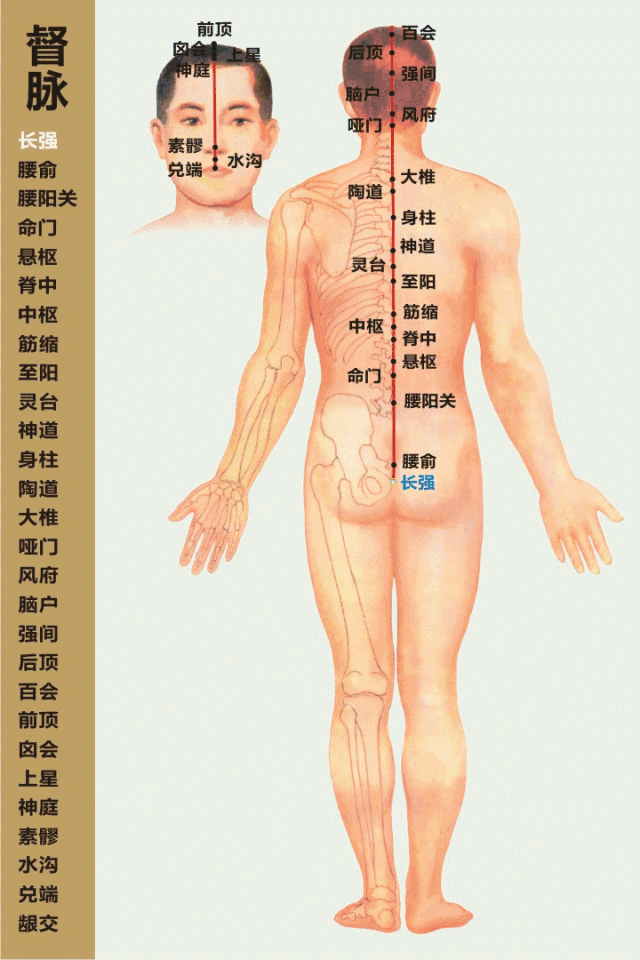
1. Pathway
Du Mai originates from the lower abdomen, descends through the perineum, reaches the Chang Qiang point at the sacrococcygeal region, ascends along the spine, passes through the nape to the Feng Fu point, enters the brain, belongs to the brain, ascends along the midline of the head to the Bai Hui point at the top of the head, descends through the forehead to the Su Liao point at the tip of the nose, passes through the philtrum, and reaches the Yin Jiao point at the center of the upper teeth.
2. Branches
The first branch originates from the center of the uterus, exits the perineum, and meets the Foot Shaoyin Kidney meridian and the Foot Taiyang Bladder meridian at the tailbone, penetrating the spine, belonging to the Kidney.
The second branch ascends directly from the lower abdomen through the navel, reaches the heart, meets the Chong and Ren meridians at the throat, and continues to the jaw, encircling the lips, and reaching the center below the eyes.
The third branch originates from the inner corner of the eye, ascends to the forehead, intersects at the top of the head, connects to the brain, then descends along the back of the neck, along the inner scapula, beside the spine, reaching the waist, and entering the muscles on both sides of the spine, connecting with the kidneys.
3. Physiological Functions
(1) Regulates the Qi and blood of the Yang meridians, known as the “Sea of Yang Vessels”
Du Mai runs along the back of the body, which is Yang, indicating that Du Mai has a commanding and supervising role over the Qi of the Yang meridians. Additionally, all six Yang meridians intersect with Du Mai at the Da Zhui point, indicating that Du Mai regulates the Yang meridians, hence the saying “governs all Yang meridians”.
(2) Reflects the functions of the brain, kidneys, and spinal cord
Du Mai belongs to the brain and connects with the kidneys. The kidneys produce marrow, and the brain is the sea of marrow. The relationship between Du Mai and the brain, kidneys, and spinal cord is very close.
(3) Governs reproductive functions
Du Mai connects with the kidneys, which govern reproduction, thus Du Mai is related to reproductive functions.
3.Chong Mai
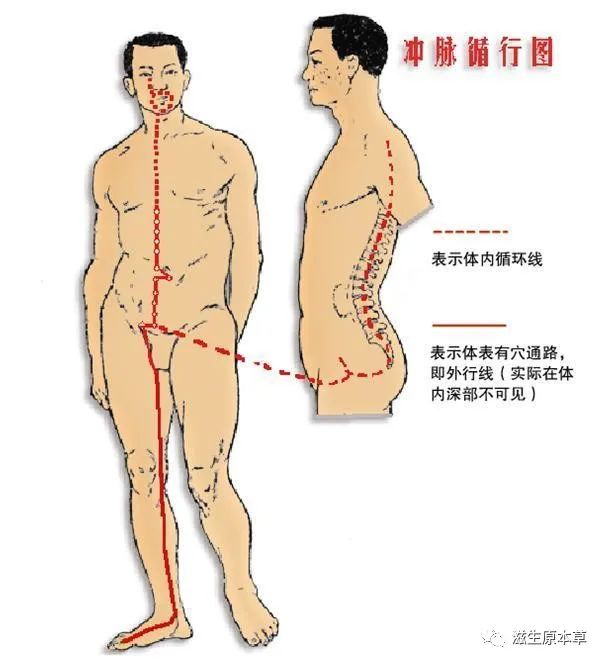
1. Pathway
Chong Mai originates from the uterus, descends through the perineum, and divides into two branches.
The ascending branch (the main part of Chong Mai) runs along the anterior abdominal wall, five cun beside the navel, ascends, connects with the Foot Shaoyin meridian, spreads in the chest, and continues upward, passing through the throat and encircling the lips; the descending branch runs down from the perineum along the inner thigh to the space between the big toe.
2. Physiological Functions
(1) Regulates the Qi and blood of the twelve meridians
Chong Mai ascends to the head and descends to the feet, penetrating the entire body, serving as a crucial point for the Qi and blood of all meridians. When the Qi and blood of the meridians and organs are abundant, Chong Mai can store and reserve them; when they are deficient, Chong Mai can supply and replenish them to maintain the normal physiological activities of the body’s tissues and organs. Hence, it is known as the “sea of the twelve meridians”, “sea of the five organs and six bowels”, and “sea of blood”.
(2) Governs reproductive functions
Chong Mai originates from the uterus, also known as the “blood chamber” or “blood sea”. Chong Mai has a role in regulating menstruation. It is closely related to reproductive functions; for women, “when Chong Mai is abundant, menstruation occurs regularly, leading to conception”. For men, either congenital deficiency of Chong Mai or acquired injury to Chong Mai can lead to reproductive dysfunction.
(3) Regulates the ascending and descending of Qi
Chong Mai connects with the Foot Shaoyin, belongs to Yangming, and communicates with Jueyin and Taiyang. Chong Mai has the function of regulating the ascending and descending of Qi in certain organs (mainly the liver, kidneys, and stomach).
4.Dai Mai
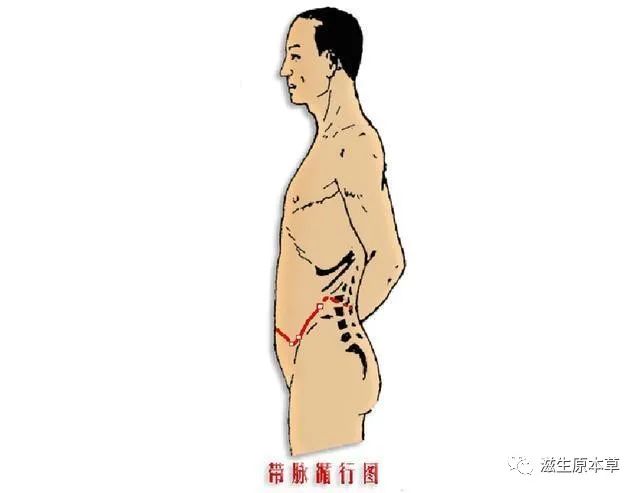
1. Pathway
Dai Mai originates from the lateral costal region, descends obliquely, intersects with the Dai Mai point of the Foot Shaoyang Gallbladder meridian, encircles the body, and at the Dai Mai point, descends obliquely along the upper edge of the hip bone to the lower abdomen.
2. Physiological Functions
Restrains the vertical flow of the meridians and governs women’s leukorrhea.
5.Yin Qiao Mai
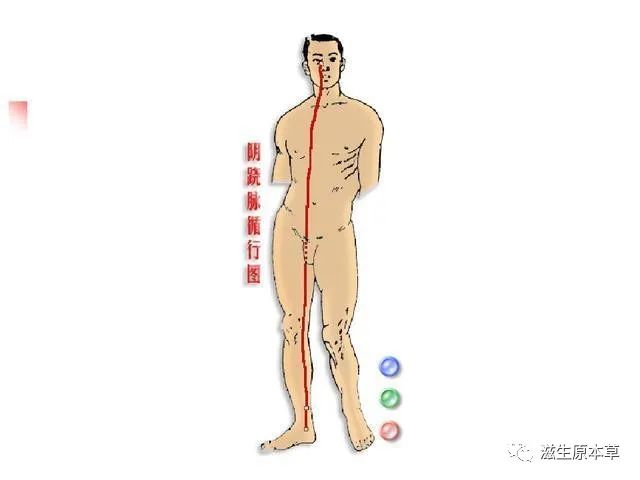
1. Pathway
Yin Qiao Mai originates from the inner side of the heel of the Foot Shaoyin meridian at the Zhaohai point, ascends through the inner ankle, along the inner thigh to the anterior genital area, ascends along the anterior surface of the trunk to the chest, enters the Jueyin area, ascends beside the Adam’s apple to the Ren Mai Tian Tu point, reaches the side of the nose, and connects with the inner corner of the eye, ascending along with the Foot Taiyang and Yang Qiao Mai.
2. Physiological Functions
Controls the opening and closing of the eyes and the movement of the muscles.
6.Yang Qiao Mai
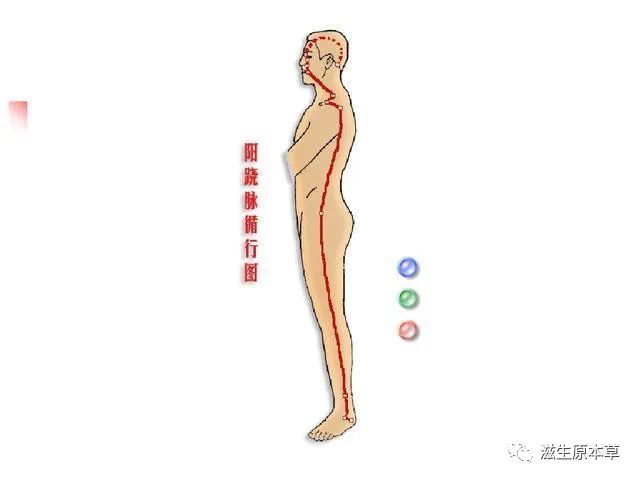
1. Pathway
Yang Qiao Mai originates from the outer side of the heel of the Foot Taiyang meridian at the Shen Mai point, ascends along the outer ankle, along the outer edge of the lower limb to the abdomen. It runs along the posterior lateral side of the chest, through the shoulder, neck, and reaches the corner of the mouth, arriving at the inner corner of the eye. It connects with the Foot Taiyang and Yin Qiao Mai, then ascends along the Foot Taiyang to meet the Foot Shaoyang at the Feng Chi point at the back of the neck.
2. Physiological Functions
Controls the opening and closing of the eyes and muscle movement.
7.Yin Wei Mai
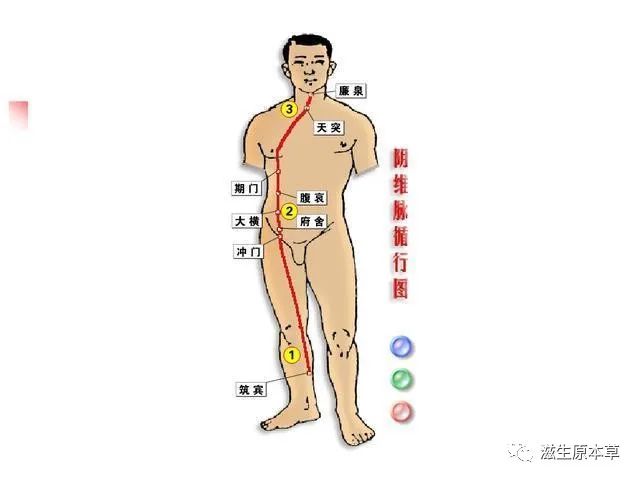
1. Pathway
Yin Wei Mai originates from the Zhubin point, five cun above the inner ankle of the Foot Shaoyin meridian, ascends along the inner side of the lower limb, reaches the abdomen, travels with the Foot Taiyin Spleen meridian to the lateral costal region, connects with the Foot Jueyin Liver meridian, ascends to intersect with the Tian Tu point of Ren Mai, and terminates at the Lian Quan point in the throat.
2. Physiological Functions
The term “Wei” in Yin Wei means to connect and bind. Yin Wei has the function of connecting the Yin meridians.
8.Yang Wei Mai
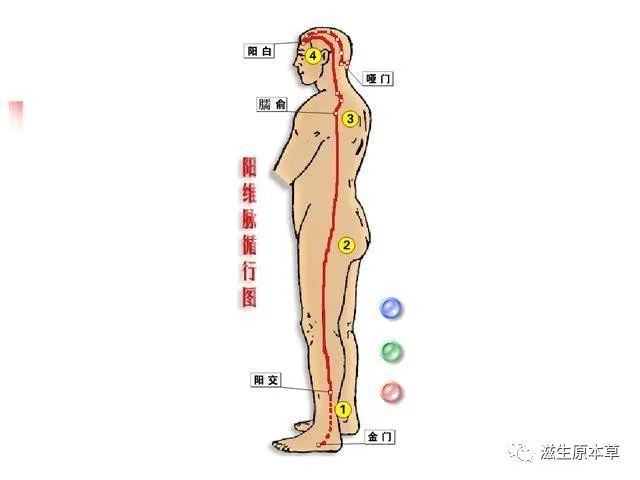
1. Pathway
Yang Wei Mai originates from the Jin Men point of the Foot Taiyang meridian, passes over the outer ankle, ascends along the outer edge of the lower limb, travels along the posterior lateral side of the trunk, from the axilla over the shoulder, through the neck, and forward to the forehead, distributing to the side of the head and the back of the neck, connecting with the Du Mai.
2. Physiological Functions
Connects the Yang meridians.
Eight Representative Acupuncture Points:
Within the Eight Extraordinary Vessels, there are eight representative acupuncture points: Gong Sun, Nei Guan, Lin Qi, Wai Guan, Shen Mai, Hou Xi, Lie Que, and Zhao Hai. These eight points are located at the intersections of our twelve regular meridians and the eight extraordinary vessels, strengthening the connection and intersection between the twelve regular meridians and the eight extraordinary vessels. It can be said that by unblocking the eight extraordinary vessels, we achieve the goal of treating diseases and nurturing health.

